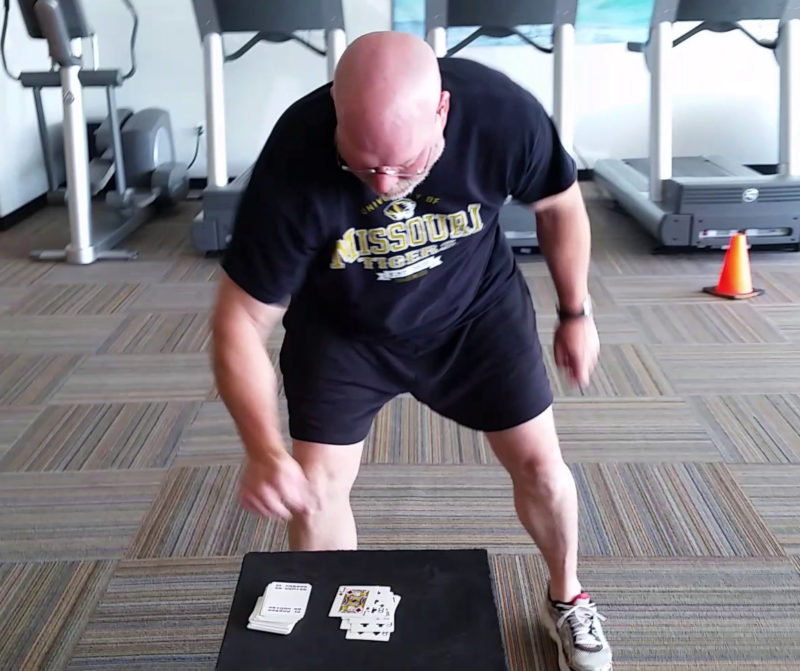Cognitive Agility training is the key.
As I have previously written, cognitive agility or dual-tasking is one of the best ways in avoiding falls in older adults. Last time, I showed the preliminary movements which are forward and backward. I also showed moving sideways. This lateral movement is a movement that usually leads to falls because we don’t lift up our foot enough, and end up tripping.
In today’s video, you’ll see a couple changes. We’re using a deck of cards instead of dice. This is another way that you can train cognitive agility on your own. With only 2 cones, you have several options to use the deck.
Here are a few;
- Odds vs evens (Jack=11, Queen=12, King=13, Ace=1)
- Color (black suites vs red suites)
- Number (Ace-6 vs 7-King)
You’ll also notice the ‘V-shape’ of the cones. This movement pattern is another high potential falling movement. Often we start to turn our upper body and the feet/legs don’t move or don’t move quickly enough and down you go.
We work on turning sharply (about 135 degrees to the back) both to the right and the left to improve your ability to move and avoiding falls, all while focusing on another task that requires you to process information and make a decision. In this case, seeing/processing a card, then reacting to what card is drawn by turn to the corresponding cone.
If you’ve never tried this, it’s a fun way to get general conditioning. While we use this for older adults, ANYONE can do this, especially athletes.
So many falls occur when you are distracted or the mind is wandering. Cognitive agility brain training teaches the ability to focus on one aspect of thinking while moving in a coordinated pattern.


One response to “Avoiding Falls In Older Adults”
[…] is just one aspect that we are addressing, click the hyperlink for other tips and suggestions on how to prevent falling. Today we’ll give you another tool for preventing falls, called the toe […]